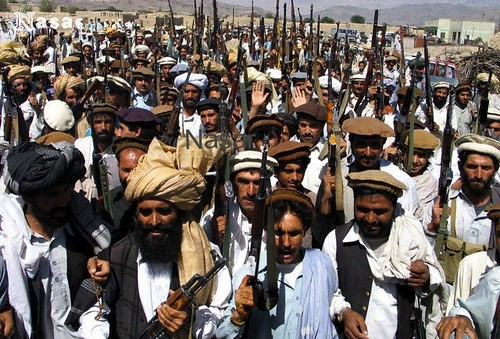Pashtuns Unity Under Siege by Militants and Enablers

In the heart of Kurram District, where mountains meet resilience and traditions run deep, a dark reality is unfolding that threatens the very fabric of Pashtun unity. Civilians are being robbed of their lifelines—food convoys meant for the common people are being torched, not by foreign invaders, but by those who claim to fight for a greater cause. Fitna al-Khawarij (FAK), under the guise of ideological struggle, is now openly targeting resources meant for the public, burning trucks, looting supplies, and plunging innocent communities into fear and deprivation. These acts raise a question that can no longer be ignored: if the militants’ struggle is with the military, why are civilians paying the price?
This is not collateral damage; this is a deliberate strategy. FAK’s violence is not just directed at the state, it is aimed at undermining the very existence of normal life in the tribal regions. Attacking food trucks, schools, and polio teams does not symbolize resistance—it exemplifies terror. These are attacks on progress, health, education, and dignity. It is a calculated effort to keep Pashtun communities in perpetual chaos and despair.
Equally troubling is the deafening silence from the Pashtun Tahafuz Movement (PTM), which claims to be the voice of the Pashtun people. They speak of rights and justice, yet offer no condemnation when militants ravage communities, destroy educational institutions, or assassinate health workers. If PTM truly represents Pashtun interests, why does it turn a blind eye to FAK’s brutality? Where is their voice when civilians are terrorized by these self-proclaimed warriors of faith who desecrate mosques, exploit religion, and create fear under the cover of ideology?
Time and again, PTM has focused its criticism solely on Pakistan’s law enforcement agencies, painting a one-sided picture while omitting the real and present danger posed by FAK. Their narrative never seems to account for the daily acts of violence committed by these militants. This selective outrage is more than a political stance—it is a betrayal of the people they claim to represent.
FAK is not a resistance group. It is a terrorist outfit exploiting religion and ethnicity to weaken the state and keep the tribal belt trapped in instability. Their acts are not about justice, but about spreading terror and fear. And when voices like PTM ignore or justify this violence, they indirectly empower the militants. Pashtun unity suffers, and so does the security of every family, every schoolchild, and every health worker in the region.
The time has come for Pashtuns across Pakistan to reflect on who truly stands for their welfare. Is it those who burn their food supplies and murder their teachers, or those who strive to restore peace, even at the cost of their lives? Is it those who fan the flames of discord and offer no solutions, or those who protect their borders, build roads, and vaccinate their children?
Pashtuns are a proud, brave people who have withstood centuries of hardship with dignity. They deserve leadership that uplifts, not one that exploits their pain for political gain. The future of the tribal regions, and indeed the entire Pashtun community, depends on recognizing the real threats. FAK and their enablers want to divide and destroy. They want to manipulate faith, poison minds, and isolate communities.
It is time for the Pashtun community to unite against these destructive elements and reject all those who justify or ignore such violence. Pashtun blood must no longer be shed for the ambitions of militants or the silence of opportunists. Safety, education, food, and peace are not luxuries—they are rights. Rights that must be protected from both external enemies and internal betrayal.
In this defining moment, silence is complicity. The community must choose unity over division, truth over manipulation, and courage over fear. The real enemy is clear. It is not the state, not the law, but those who set fire to the hopes of innocent people and those who stay quiet while it happens.











